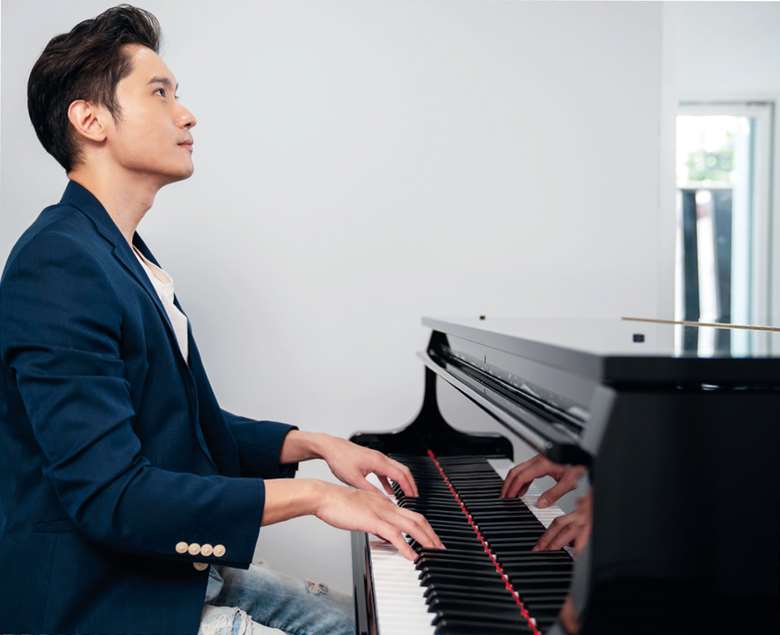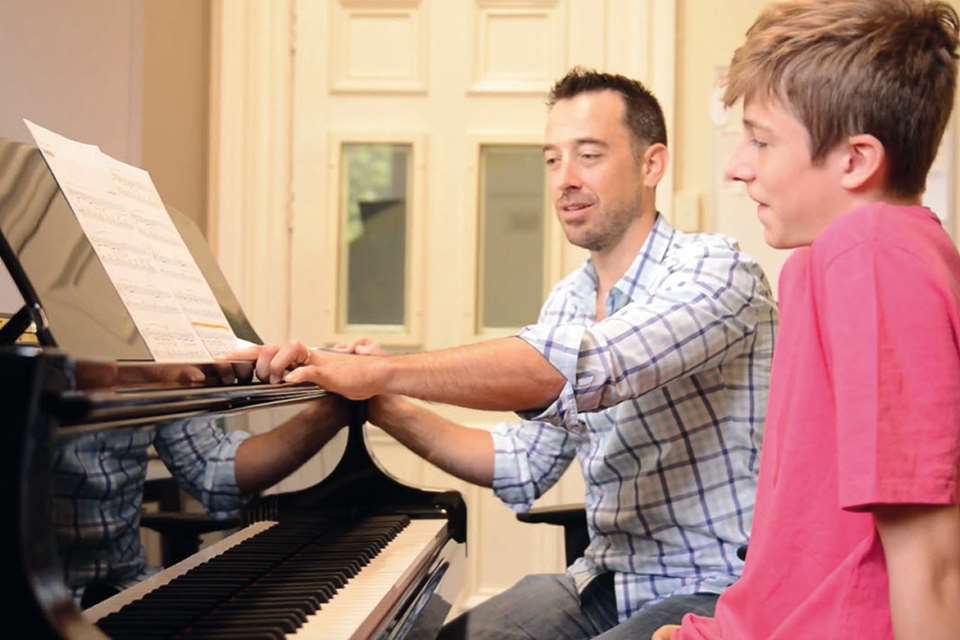Believe your ears: a whole-brain approach to piano playing
Charlotte Way
Wednesday, November 1, 2023
Pianist, teacher and workshop leader Charlotte Way describes how a whole-brain approach may foster creative thinking in piano lessons and practice.

Adobe Stock / Bung
We're probably all familiar with the traditional format of instrumental lessons: these usually begin with learning to read notation and playing technical exercises. This was the way I was taught and the style that I adopted when I became a teacher myself. I continued to use it until I began to read literature that resonated with my sense that perhaps this method was not offering an adequate experience. Pupils were not learning to engage their aural imagination or listening ahead as they played. This prompted a major re-think.
It seems to me that our culture relies heavily on the idea that ‘seeing is believing’, and therefore this is how young brains are conditioned. We often hear people using the expression ‘the mind's eye’, but when did anyone ever talk about ‘the mind's ear’?
The literature
In his book The Sounding Symbol, music educator George Odam claims that this reliance on reading music ‘fundamentally affects our willingness to trust in and develop our aural memory’ (Odam, 1995). He says that: ‘Too often the symbols we use appear to get in the way of the sounds they represent,’ and written music becomes a barrier. Others have observed that reading notation can actually overload children's mental resources to the extent that they don't have enough left over to play their instrument and learn to think in sound.
These findings are echoed by Sally Chappell in her article ‘Developing the Complete Pianist’, which describes how prioritising notation and technique means children fail to develop a clear mental image of what is being played. From an earlier time, the legendary piano teacher Heinrich Neuhaus (1888–1964) stated in the preface to The Art of Piano Playing that when the focus is on the technical mastery of the instrument, the music itself (‘the artistic image’) is not given its due.
Whole-brain approach
Despite major 20th-century educators such as Orff, Kodály and Suzuki insisting that musical experience be put at the heart of instrumental learning, by performing by ear before learning to read, this approach has never become mainstream.
This overdependence on reading, commonly thought of as a left-brain skill, prompts both Odam and Chappell to advocate teaching methods that strengthen right-brain skills and work towards a synthesis of both right- and left-brain abilities. Chappell suggests that this ‘whole brain’ approach should be used from the first lesson.
I suspect that pianists are particularly at risk of this reliance on visual aspects because the keyboard presents us with a bold visual pattern. This makes it all too easy to rely on decoding one pattern – musical notation – into another – the piano keyboard – without listening much at all. To me, this is ‘typing’: pianists are hearing a note or phrase only after they've played it, rather than playing what they have already heard with their inner ear – the sound is coming after the symbol. What is needed is for the analytical (left) brain to translate the dots into sound, which is then stored in a mental ‘audio file’ that can be drawn on during performance. Making this transition from one brain circuit to another is the crucial challenge.
Strategy: don't look, listen!
A simple strategy to help meet this challenge is to encourage students to try playing passages without looking at their hands. I have found this to be highly effective in developing an aural image, improving muscle memory and creating a closer connection to the music itself.
I usually start with easy, well-known tunes such as ‘Happy Birthday’ or ‘Frère Jacques’. Compared to decoding dots, playing ‘blind’ is a fundamentally different experience, which directly connects awareness of sound with kinaesthetic feedback, resulting in more active listening and reduced physical tension.
I then move on to using the technique in learning pieces. I'm not necessarily suggesting that all pieces are completely memorised, but repeating phrases with hands separately and together in this way really helps to break the reliance on ‘looking’, which so often hinders fluency and musicality.
It's hard to find any mention of this technique in teaching literature, but international pianist Sir Stephen Hough describes it as ‘astonishingly effective’ in promoting acute listening and awareness of keyboard geography. He tells us that it was recommended by Leopold Godowsky and Josef Lhévinne, virtuoso pianists and teachers of the early 20th Century.
Easier said than done
Students sometimes need coaxing to try even a short phrase or scale without looking at their hands, but in practice often find it easier than anticipated. The experience is qualitatively different – as if the musical content is being fully ‘downloaded’ into their experience rather than left ‘in the cloud’.
Improvising is another activity that can cause apprehension. But this is also easier when not looking, which allows us to respond more directly to our musical instincts and tap into our creativity. Sight-reading also benefits from developing the ability to listen ahead, enabling us to get away from ‘button-pushing’ and give performances which may not be note-perfect but nonetheless convey the musical message.
Conclusion
Over the last two decades or so, piano method books have begun to introduce playful, exploratory elements to encourage a small child's curiosity, and educators such as Paul Harris and Lucinda Mackworth-Young have advocated more integrated learning styles which include ear-playing and improvisation. However, old habits die hard. How many of us simply teach as we were taught?
Teachers and parents still seem wedded to the idea that only note-reading and technique constitute ‘proper’ instrumental lessons. Recently, I asked a seven-year-old, who'd just started learning the piano, what she'd covered in her first lesson. ‘Crotchets and minims’, she replied.
Ultimately, music is about communicating: telling stories and painting pictures in sound. So, developing this aural image should be our starting point. The more we use our imaginations to think in sound, the more note-reading and technique can stop taking pride of place and be put to the service of conveying the musical message fluently and eloquently. This is why I recommend playing without looking, as a tool to foster more creative thinking in piano lessons and practice. It really works in building confidence and fluency. We need to stop looking, and believe our ears!


